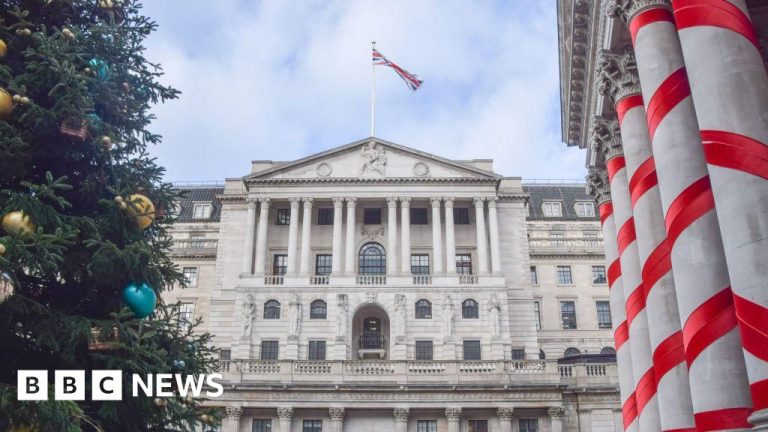The Bank of England is expected to hold interest rates steady at a meeting later today.
Most analysts predict the benchmark rate will remain at its current level of 4.75% when the decision is announced at 12:00 GMT.
It comes as inflation rose for the second consecutive month to 2.6% in the year ending November, pushing it further above the Bank's 2% target.
In November, Bank Governor Andrew Bailey said the rate trajectory would likely be “downwards from here on”, but warned the process would be gradual.
The bank raises and lowers rates to try to control inflation, which measures the rate of overall price increases.
The idea is that if you make borrowing more expensive, people have less money to spend. People can also be encouraged to save more.
In turn, this reduces demand for goods and slows the rate at which prices rise.
But it's a balancing act: Rising borrowing costs risk harming the economy.
Businesses, for example, can borrow less, making them less likely to create jobs. Some may reduce their workforce and investments.
The Bank's Monetary Policy Committee (MPC) – the group of people at the Bank who decide rates – cut them in November from 5% to 4.75% – the second reduction in 2024.
However, rising prices, combined with figures released Tuesday showing faster wage growth, suggest the central bank may need to keep interest rates at their current level for longer.
Paul Dales, chief UK economist at think tank Capital Economics, said November's higher inflation figure made an interest rate cut on Thursday very unlikely.
“There is virtually no chance that the Bank of England will deliver an early Christmas present with a further interest rate cut,” he said.
“This is all the more true as domestic inflationary pressures appear to be a little stronger than expected by the Bank.”
Capital Economics forecasts that inflation will fall in December, then rise again in January.
But it predicts that by the end of next year it will have returned to a level close to the Bank of England's 2% target.
The bank's base interest rate strongly influences the rates that major banks and other money lenders charge customers for loans, as well as for credit cards.
Lenders have mostly “factored in” the impact of maintaining or decreasing the base rate when making decisions about their own interest rates.
Mortgage rates are still much higher than they have been for much of the last decade.
The average two-year fixed mortgage rate is 5.04%, according to financial information company Moneyfacts. A five-year contract has an average rate of 4.14%.

